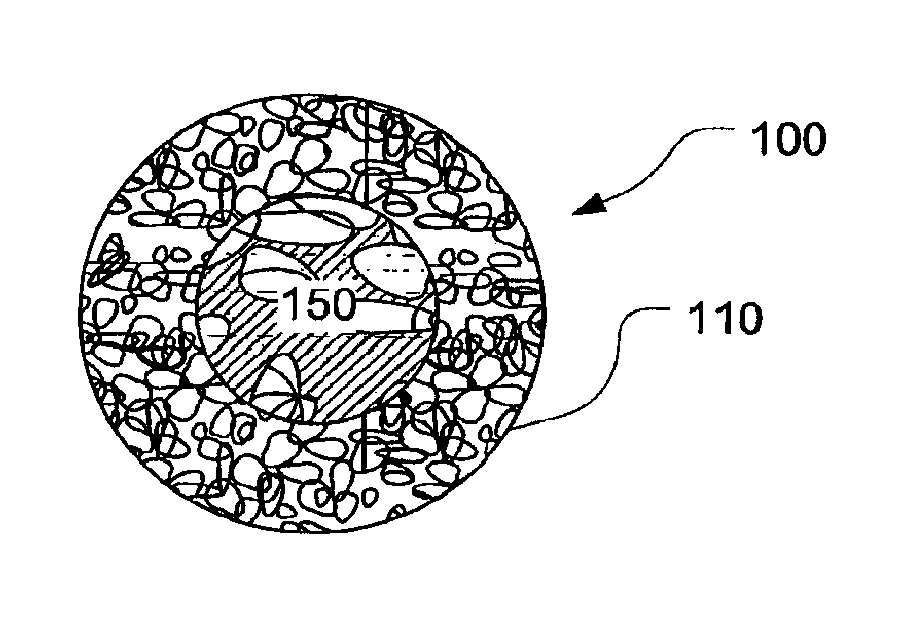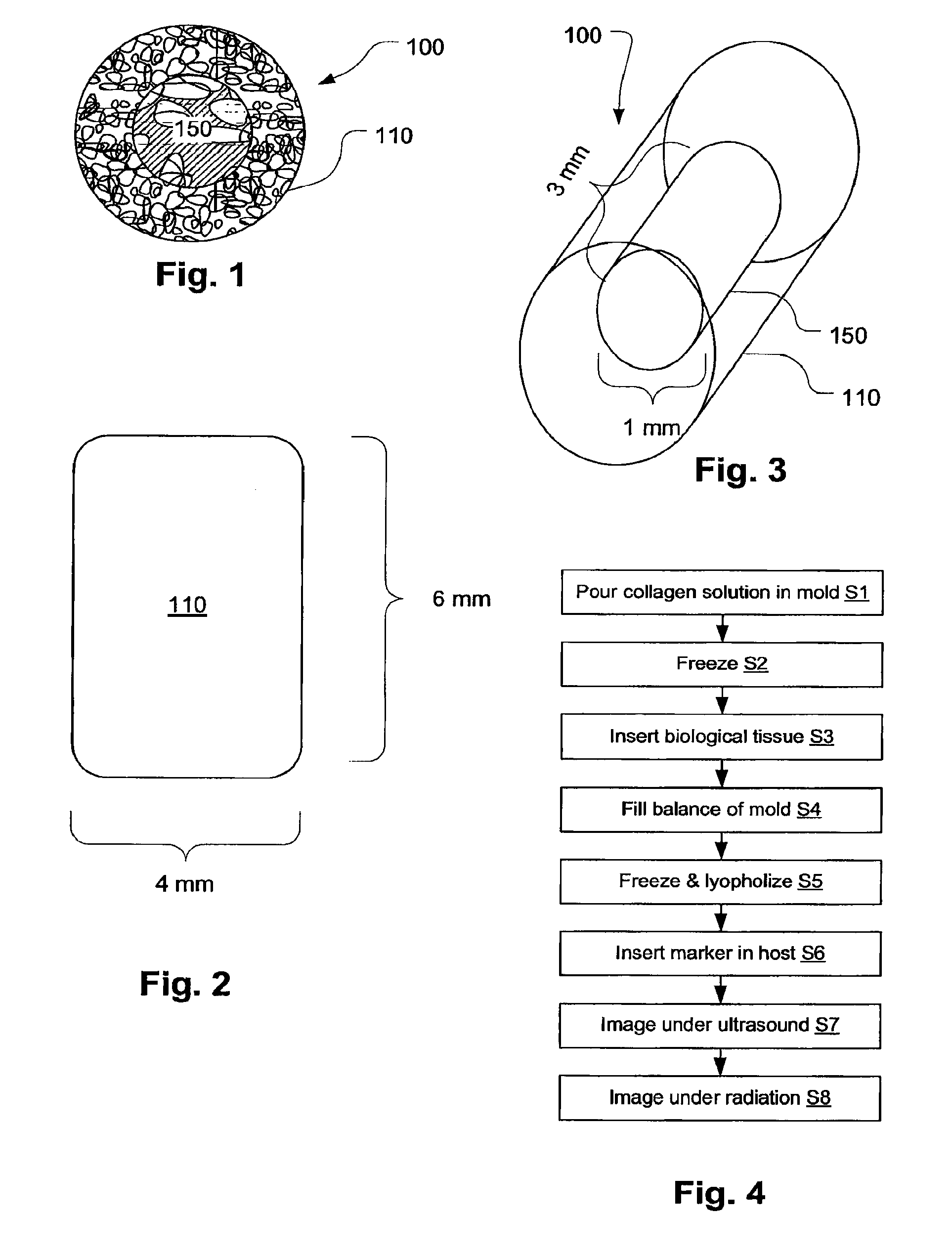Biopsy marker with in situ-generated imaging properties
a biopsy and marker technology, applied in the field of biopsy tissue markers, can solve the problem that elastin rich tissue is highly susceptible to calcification
- Summary
- Abstract
- Description
- Claims
- Application Information
AI Technical Summary
Benefits of technology
Problems solved by technology
Method used
Image
Examples
Embodiment Construction
[0031]A biopsy marker, preferably a breast biopsy marker, has radio-opaque properties that are derived in situ, preferably based on a natural a biological response, such as calcification or accumulation or tissue-concentration of a chemical agent that acts as an imaging contrast. In an embodiment, a biodegradable foam such as collagen foam or gelatin foam is embedded with a biological tissue that is susceptible to the calcification. The biopsy marker is implanted to mark the biopsy site. The foam material provides ultrasonic visibility to access the implantation site. The biological tissue undergoes calcification in 30 days to 5 years depending on the chemistry of biological tissue used. The calcification generated in the biological tissue provides visibility in magnetic resonance imaging (MRI) and X-ray imaging. As a result, the marker may be located using radiation-based imaging or ultrasonic imaging.
[0032]Many types of implantable tissues can be used to prepare a biopsy marker de...
PUM
| Property | Measurement | Unit |
|---|---|---|
| time interval | aaaaa | aaaaa |
| porosity | aaaaa | aaaaa |
| length | aaaaa | aaaaa |
Abstract
Description
Claims
Application Information
 Login to View More
Login to View More - R&D
- Intellectual Property
- Life Sciences
- Materials
- Tech Scout
- Unparalleled Data Quality
- Higher Quality Content
- 60% Fewer Hallucinations
Browse by: Latest US Patents, China's latest patents, Technical Efficacy Thesaurus, Application Domain, Technology Topic, Popular Technical Reports.
© 2025 PatSnap. All rights reserved.Legal|Privacy policy|Modern Slavery Act Transparency Statement|Sitemap|About US| Contact US: help@patsnap.com


